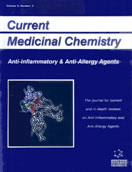Abstract
Lipoxins (LX) are trihydroxytetraene-containing eicosanoids generated within the vascular lumen during platelet-leukocyte interactions and at mucosal surfaces of gastrointestinal, respiratory, and oral cavities during phagocyteepithelial cell interactions. Recent findings and several new concepts are reviewed here regarding the generation of LX, 15 epi-LX and related novel chemical mediators, considering their impact in resolution of acute inflammation. During cell-cell interactions, transcellular biosynthetic pathways are used as major LX biosynthetic routes, and thus, in humans, LX are formed in vivo during multicellular responses such as vascular inflammation, reperfusion injury and asthma. This branch of the eicosanoid cascade generates specific chemical mediators that serve as neutrophil “stop signals”, as they regulate key steps in leukocyte trafficking and prevent neutrophil-mediated acute tissue injury. In addition, aspirins mechanism of action also involves the triggering of endogenous carbon 15 epimers of lipoxins and omega n-3 fatty acids that mimic the bioactions of native LX and dampen inflammation as well as enhance resolution. An overview of these recent developments brings forth a novel repertoire of endogenous chemical signals and pathways that serve as antiinflammatory lipid mediators and also facilitate the resolution of acute inflammatory responses.
Keywords: anti-inflammation, platelets, leukocytes, signal transduction, resolution mediators
 4
4

